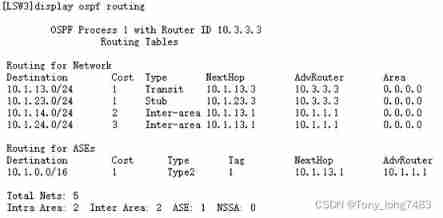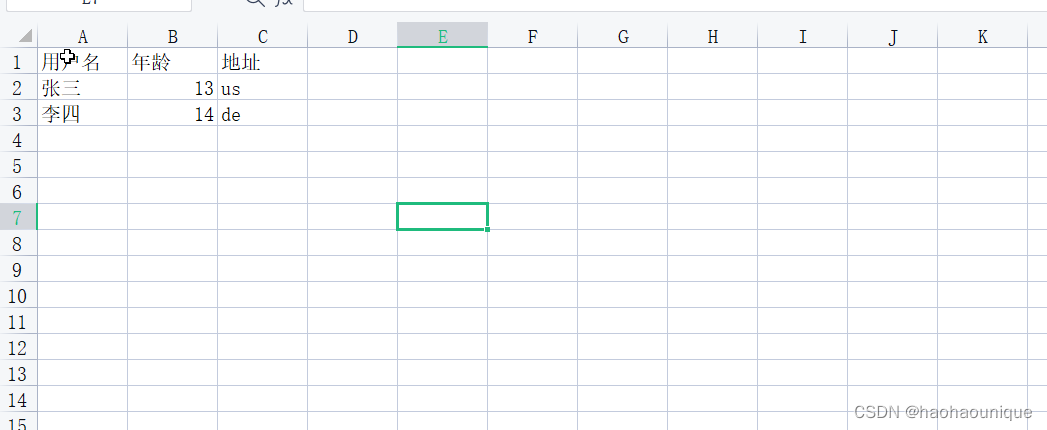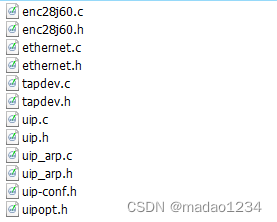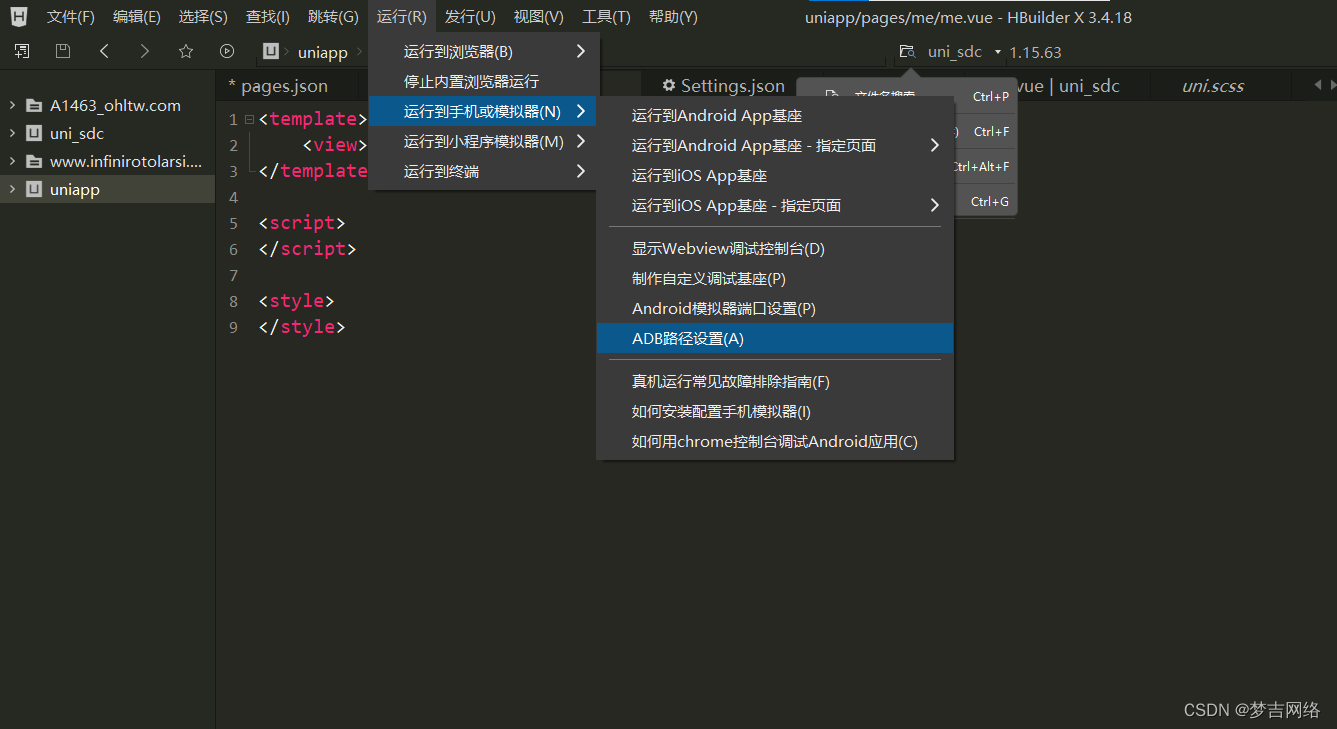当前位置:网站首页>Pointer pointer array, array pointer
Pointer pointer array, array pointer
2022-07-06 00:19:00 【It's Yi'an】
Part1:
Pointer array usage low-level write in Output normal
Before , Pointer arrays have been mentioned , Is an array , An array of pointers . Why does this thing appear , When we want to give many addresses to pointer variables , Need to write one by one , It's too troublesome , Pointer array solves this problem . Let's take a look at the use of pointer arrays : And defining an array of common types , Only the content of assignment becomes the address , Type plus *.
Use the words , We can use a loop to find the address of each pointer , Dereference it .
#include<stdio.h>
int main(void) {
int a = 1;
int b = 2;
int c = 3;
int d = 4;
int e = 5;
int* parr[] = { &a,&b,&c,&d,&e };// Input , Type changed to int*, A pure array
int i = 0; // Output
for (i = 0; i < 5; i++) {
printf("%d ", *parr[i]);
}
return 0;
}This kind of writing is mostly for beginners , We have a lot of int Variable of type , Why not write it as an array ? The types of pointer arrays are also unified , Only pointer variables of the same type can be stored . We usually write arrays , Knowing the first address of the array can get the elements of the whole array , The same is true here , We only need a pointer variable to point to the first address of the array . Multiple elements point to multiple arrays of the same type , Put the pointers together into an array of pointers , A structure similar to a two-dimensional array appears
#include<stdio.h>
int main(void) {
int a[] = { 1,2,3,4,5 };
int b[] = { 2,3,4,5,6 };
int c[] = { 3,4,5,6,7 };
int* parr[] = { a,b,c }; // Input
int i = 0;
for (i = 0; i < 3; i++) { // Find the first address of the array
int j = 0;
for (j; j < 5; j++) { // Find each array element according to the first address
printf("%d ", *(parr[i] + j)); // Output
}
putchar('\n');
}
return 0;
}In order to deepen our understanding of , The operations we usually perform on arrays can also be performed on pointer arrays
printf("%d\n", sizeof(parr));
printf("%d\n", sizeof(parr)/sizeof(parr[0]));The results obtained here are 24 and 3, I use it x64, The number of bytes occupied by the pointer is 8.
Part2:
Array pointer The pointer / Array ? analogy First element vs Array associativity
What are array pointers ? Let's make an analogy , An integer pointer is a pointer to an integer , A character pointer is a pointer to a character , seeing the name of a thing one thinks of its function : An array pointer is a pointer to an array .
We need to know the address of the first element of the array and the address of the array first , Before, there was a detailed description on the beginner's pointer , Let's recall .
int arr[] = { 1,2,3,4,5,6,7,8,9,10 };
//arr--- First element address
//&arr[0]--- First element address
//&arr--- Array address Pointer to array , Is it like this ?
int* p = arr;
It's still like this ?
int* p = &arr[0];You will find that they all point to the address of the first element of the array , It doesn't point to the array address ( The difference is mentioned in the beginner's pointer ), What about that ?
int* q = &arr; This always points to the array address ?
It seems reasonable , But it's not what we want , What we want is to use a pointer to point to all the elements in the array , It is still impossible to point to the address of each element with a pointer . Let's see what happens next ?
int* p[] = { &arr[0],&arr[1],&arr[2]......&arr[8] ,&arr[9] };
// use p[0],p[1] Wait to point to the element Is this a pointer to all elements ? well , If you remember the pointer array you just saw , You can clearly find , This is an array of pointers , That is to say, here p[0],p[1], It's not a pointer , They are many pointers put together , From the perspective of memory, every eight bytes are placed in one block (x64), Imagine eighty bytes , Insert a partition every eight , Form pointer variables one by one , This is an array of pointers . What the array pointer has to do is take away these partitions , Put all the addresses in one space , Form a pointer with a space of 80 bytes , That is, array pointers . Maybe you have questions : Don't you put an address in the pointer space ? How can it point to all element addresses ? ha-ha , This is the difference between array pointers and other types of pointers ! How to write the code ?
Here is a combination [ ] The combination of is higher than * The no. , If we write directly int*p[], such p and 【】 combination , Is an array , What kind of ?int*. Then we can make * and p First combine , How do you do it? ? Add one more ().int(*p)[ ].*p First, it means that this is a pointer , After use int【】 Represents a pointer to an integer array type , Points to an integer array .( This is related to the designer , They want to express it in this way for the convenience of writing , No more symbols , Imagine a pile of rules and symbols , Use the arrangement of symbols to represent those rules , After continuous optimization , The surviving symbols are for convenience of use and memory )
int(*p)[10] = &arr; // A space is 80 Byte pointer How do we dereference ? We know it is a pointer , How do general pointers dereference ?
#include<stdio.h>
int main (void)
{
int arr[]={1,2,3,4,5,6,7,8,9,10};
int* p=arr;
printf("%d",*p); // Dereference of integer pointer
}
// The result is :1How to do array pointer ? First, we need to understand the combination .
I mentioned the problem of associativity before , This 【】 What does it mean to combine with the pointer outside the definition ? Array ?
You must have known before that array is a special pointer . Its 【】 It means to calculate and dereference the address , as follows :
#include<stdio.h>
int main(void) {
int arr[] = { 1,2,3,4,5,6,7,8,9,10 };
int* p = arr; // Define an integer pointer to the address of the first element
printf("%d\n", arr[1]); //arr Represents the address of the first element , Conduct +1 Dereference after operation
printf("%d\n", p[1]); // p Equal to the first element address , Conduct +1 Dereference after operation
// The results of both operations are :2
return 0;
}Let's take a look at this code :
int(*p)[10] = &arr;
printf("%d\n",**p); // You can find p It's a secondary pointer
// Need to dereference twice , But there is something special
// The running result is :1Let's look at this code :
printf("%p\n", p);
printf("%p\n", *p);
// The values obtained by running the program are exactly the same , Is it a little weird
// This is a special place , I don't know why it is designed like this Obviously here p=&a, A weird secondary pointer , We gave it a name : Pointer to array , Array pointer , type :int (*)【】, A construction type . How should the correct code describe , as follows :
#include<stdio.h>
int main(void) {
int arr[] = { 1,2,3,4,5,6,7,8,9,10 };
int(*p)[10] = &arr;
printf("%d", (*p)[0]); // Quoting , Let's add a bracket here , Make it a pointer to the first element
// Then we calculate it to get the address of a certain location , And then I'll explain the quotation .
return 0;
} int(*p)[10] = &arr;
// A piece of land has been opened up here 80 Byte space , And put arr From the beginning of the first element to the end of the element, the address is put in it
// *p=p An explanation of
// Pointer to array , The designer made this design in order to distinguish it from pointers to elements
// A simple array name represents a pointer to the first element , It needs to open up a separate space for storage
// At the same time, the value of the array name is immutable , To represent the address of the entire array
// Just above the simple array name , Improved the level , Change to secondary pointer , But don't give space alone
// Design a rule , When addressing an array name , You originally need a variable to store it , Need a space
// Don't give space alone , Take the space occupied by the array name as its space , Raise its level , Change to secondary pointer
// Mark this pointer , Mark with a type :type(*)[]
// When dereferencing this secondary pointer at the same time , Just lower its level , Become a first level pointer
边栏推荐
- 常用API类及异常体系
- 【二叉搜索树】增删改查功能代码实现
- LeetCode 6004. Get operands of 0
- LeetCode 8. String conversion integer (ATOI)
- 关于结构体所占内存大小知识
- 云呐|公司固定资产管理系统有哪些?
- Global and Chinese markets of POM plastic gears 2022-2028: Research Report on technology, participants, trends, market size and share
- Room cannot create an SQLite connection to verify the queries
- [gym 102832h] [template] combination lock (bipartite game)
- wx.getLocation(Object object)申请方法,最新版
猜你喜欢

wx.getLocation(Object object)申请方法,最新版

MySql——CRUD
![Atcoder beginer contest 254 [VP record]](/img/13/656468eb76bb8b6ea3b6465a56031d.png)
Atcoder beginer contest 254 [VP record]

单商户V4.4,初心未变,实力依旧!

微信小程序---WXML 模板语法(附带笔记文档)

NSSA area where OSPF is configured for Huawei equipment

FFMPEG关键结构体——AVFrame

Tools to improve work efficiency: the idea of SQL batch generation tools

GD32F4xx uIP协议栈移植记录

Teach you to run uni app with simulator on hbuilderx, conscience teaching!!!
随机推荐
notepad++正则表达式替换字符串
【luogu P3295】萌萌哒(并查集)(倍增)
Add noise randomly to open3d point cloud
STM32 configuration after chip replacement and possible errors
Key structure of ffmpeg - avframe
传输层协议------UDP协议
Codeforces round 804 (Div. 2) [competition record]
Global and Chinese market of water heater expansion tank 2022-2028: Research Report on technology, participants, trends, market size and share
Solve the problem of reading Chinese garbled code in sqlserver connection database
Go learning --- structure to map[string]interface{}
Classical concurrency problem: the dining problem of philosophers
Ffmpeg learning - core module
MDK debug时设置数据实时更新
JS 这次真的可以禁止常量修改了!
About the slmgr command
DEJA_VU3D - Cesium功能集 之 055-国内外各厂商地图服务地址汇总说明
Chapter 16 oauth2authorizationrequestredirectwebfilter source code analysis
Date类中日期转成指定字符串出现的问题及解决方法
Atcoder beginer contest 258 [competition record]
QT -- thread